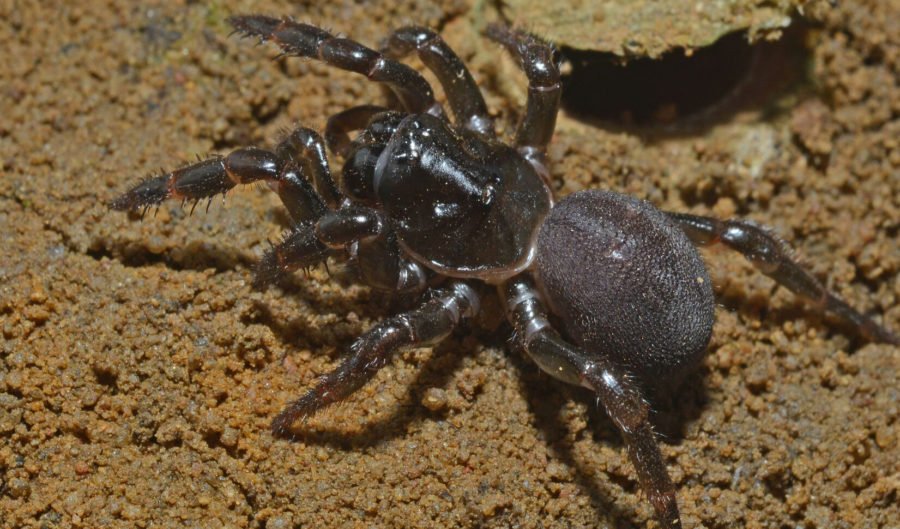Trapdoor spiders made a 10,000 km journey from Africa to Australia

THE TRAPDOOR SPIDER Moggridgea rainbowi is a unique species found only on Kangaroo Island, South Australia. It belongs to the mygalomorphs, a group of spiders that includes tarantulas, trapdoor spiders and funnel-web spiders.
It was originally thought that the distribution of this species was a result of the break-up of the ancient super-continent Gondwana nearly 100 million years ago. “Conventional wisdom had suggested the spiders became split from their South African relations with the separation of Africa from Gondwana around 95 million years ago,” says University of Adelaide PhD candidate Sophie Harrison, who also works as a Natural Resources Officer with the Department of Environment, Water and Natural Resources.
But according to a new study led by Sophie the closest relatives of M. rainbowi are not found anywhere in Australia, but in Southern Africa, where most members of the Moggridgea genus currently live.
Also, the study found that the Australian species is much younger than previously thought. “Our research showed that the divergence of M. rainbowi from African Moggridgea trapdoor spiders occurred sometime between two and 16 million years ago, well after the Africa-Gondwana separation,” Sophie explains. “ Likewise, the timing of divergence rules out the other alternative theory for the spiders arrival in Australia – that of being transported with humans, who arrived in Australia much later.”

(Image Credit: Nick Birks)
Long-distance voyagers
The findings support a rather unlikely scenario: a trans-oceanic voyage. “Our findings suggest this spider went through a mind-boggling oceanic journey of more than 10,000 km. This is a rare example of long-distance dispersal, which has never been recorded in mygalomorph spiders,” Harrison says.
“At first thought, this does seem incredible,” says Professor Andrew Austin, Sophie’s PhD supervisor. “But there are precedents of such ocean travel. Moggridgea are also found on the Comoros volcanic islands, 340km from mainland Africa, however this is a relatively short distance compared with the 10,000km from South Africa to Kangaroo Island.”
Previous studies have provided evidence supporting trans-oceanic voyages for animal groups such as primates, geckos, and even spiders. Such voyages were likely supported by specific climatic processes, explains Martin Ramirez, from the Argentinian Museum of Natural Sciences in Buenos Aires. “We think that the Antarctic Circumpolar Current and the West Wind Drift aided in eastbound transoceanic dispersal of many organisms across the southern seas,” he says.
But this is the first time such a dispersal pattern has been suggested for mygalomorphs, a group of spiders that rarely venture far from their burrows. According to Martin, the proposed long-distance dispersal for this species makes some sense. “In the case of mygalomorph spiders, it is already known that some construct waterproof burrows, for example in salt-flats,” he says.
READ MORE:

